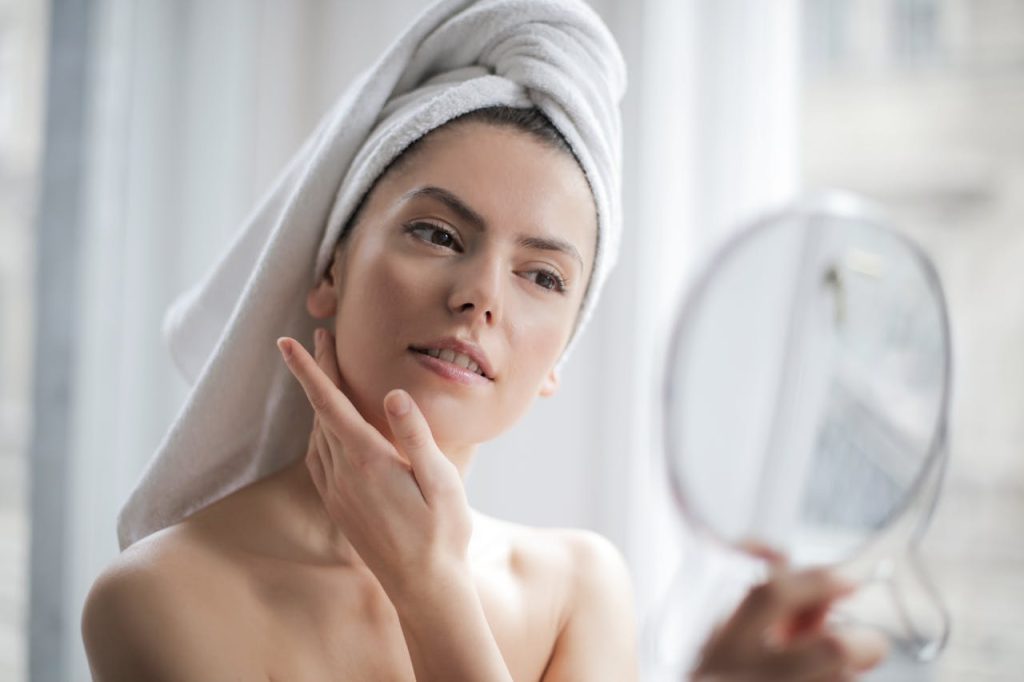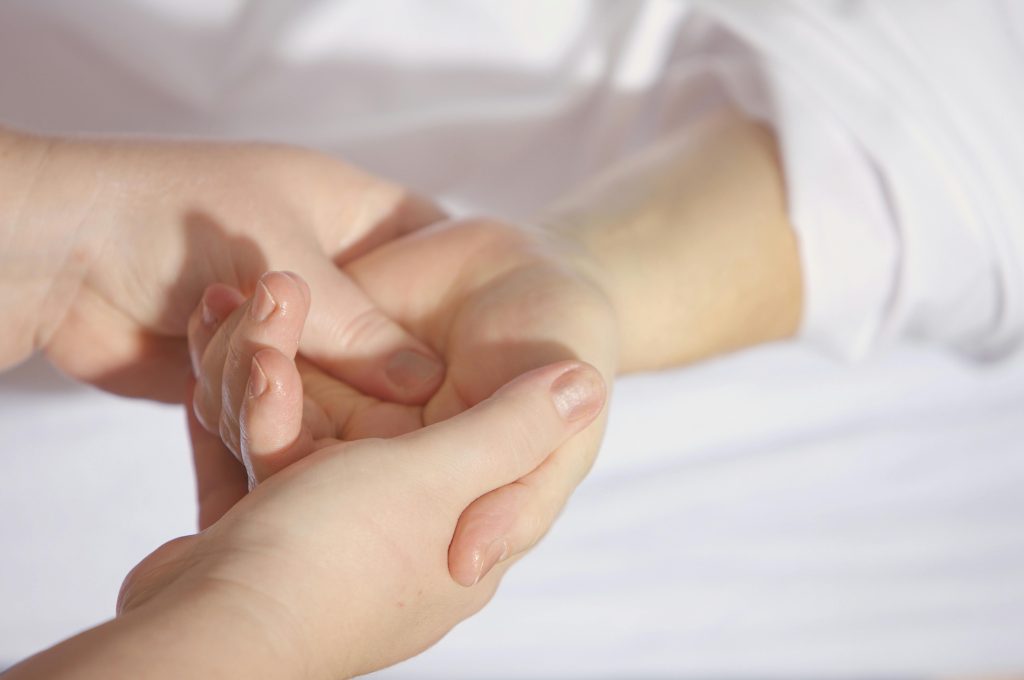Personal Care
Build a Relaxing Skincare Routine: A Self-Care Ritual
Discover how to transform your skincare routine into a relaxing self-care ritual! Learn tips for glowing skin, stress relief, and building a routine that fits your unique needs.

In our modern era, the pursuit of wellness and self-care has grown exponentially, with zeroed consideration on the comprehensive health of our body, mind, and spirit. One of the most personal and including areas of taking care of self-care is skincare, frequently disregarded as a mundane daily task but ripe with potential for transformation and well-being.
This post is a complete guide intended for skincare enthusiasts, self-care advocates, and wellness seekers in crafting a customized, relaxing skincare routine —a custom that sustains the skin as well as encourages unwinding and improves your general taking care of oneself experience.
Table of Contents
Recognizing Skincare as a Relaxing Ritual
Skincare, at its core, is centered around the thought of self-protection. In the clamoring speed of our daily lives, establishing a relaxing skincare routine becomes a non-negotiable practice to protect our sense of calm and allow for personal revival. The most common way of cleansing, nourishing, and protecting our skin can be a profoundly thoughtful work on, grounding us right now and offering a daily reset for our well-being.
The Dual Role of Skincare as Self-Care
Skincare accomplishes more than maintaining the health of our largest organ—it draws in the senses, encourages restful breathing, and creates a soothing environment for reflection and calm. It’s about taking a couple of seconds consistently to show ourselves a little love, recognizing the significance of the moment amid the chaos. Research has demonstrated the way that demonstrations of taking care of oneself, regardless of how little, can essentially diminish general pressure and give a feeling of control over our surroundings.
Previewing Your New Relaxing Skincare Routine
You’re about to embark on a just-for-you journey that promises a sanctuary in your home, a momentary escape from the rigors of the outside world. What does this look like? Picture a step-by-step process that involves gentle touch, luxurious products, and the focused intent to not just care for your skin, but to care for your peace of mind.
Understanding Your Skin Type and Needs
Before investing in a cabinet full of products, it’s critical to know your starting point. Skin, like attitudes, is not a one-size-fits-all deal. There are various types, each with its own unique needs and quirks.
Skin Types Decoded
There’s dry, oily, combination, sensitive, and normal—the well-meaning citizens of Skincare City. Understanding where you fall on the spectrum is the first step in addressing your skin’s individual requirements. This step is non-negotiable. It’s the foundation upon which you’ll tailor your routine.
The Ultimate Connection
Skin health isn’t just about looking good; it’s an indicator of your body’s holistic state. For instance, oily skin can respond to hormonal fluctuations, while sensitive skin may signal allergies or intolerances. By treating your skin right, you’re also showing your whole self some love.
Cleansing as the Foundation
Cleansing is the elemental phase of your skincare routine, akin to preparing the canvas for a masterpiece. It removes impurities, excess oil, and makeup, setting the stage for healthier skin.
The Gentle Approach
Aggressive cleansing can strip the skin of its natural oils, leading to a host of issues from dryness to increased oil production. Choosing a cleanser that respects the skin’s natural barrier is essential for maintaining a balanced complexion.
The Daily Cleansing Ritual
Morning and evening, you’ll partake in this ritual, each time with its own set of intentions and results. Mornings are for refreshing, while evenings are for the calming wind-down. Both are equally important in your quest for serene skin.
Nourishing with Moisturizers and Serums
Post-cleansing, it’s time to nurture your skin with the care it craves. Moisturizers and serums play vital roles in hydrating, repairing, and addressing specific concerns.
Quench the Thirst
A good moisturizer is like a tall glass of water for your skin. It locks in moisture, leaving your face feeling supple and comfortable. Serums, on the other hand, are potent concoctions designed to target very specific needs, whether it’s aging, pigmentation, or dehydration.

The Art of Layering
In skincare, the order of application is just as important as the products themselves. By learning how to layer your moisturizers and serums, you ensure that each superhero ingredient can save your skin in its given station.
Pampering with Masks and Treatments
Skincare is as much about the routine as it is about the grand gestures. Weekly treatments and face masks are the equivalent of spa days at home, moments to pamper and rejuvenate.
The Sacred Ritual of Masking
A mask-application session can be deeply meditative and rewarding, offering an escape from reality and a temporary state of bliss for your skin. Choose masks that resonate with your current skin condition—be it a purifying clay for congested pores or a hydrating gel for thirsty skin.
Targeted Treatments
Spot treatments, eye creams, and intensive repair formulas all have their place in your skincare arsenal. These are the firefighters dispatched to handle the specific emergency while the rest of your routine serves as the structure that prevents future incidents.
Sunscreen: Essential Protection for Skin Health
It’s not just about what to apply to your skin; it’s about what you’re keeping out. Sunscreen plays a pivotal role in preventing photodamage and maintaining youthful skin.
Shield Your Skin
There’s no debate; sunscreen is a must. It protects against UV rays, the primary culprits behind visible signs of aging and damaging effects on health. It’s the one step you should never neglect, rain or shine.
Bespoke Protection
Your sunscreen should be chosen with the same care and caution as the rest of your routine. Look for broad-spectrum protection and a formula that suits your skin type to ensure compliance and comfort.
Incorporating Relaxing Elements into the Routine
Creating a Spa-Like Atmosphere at Home
Transform your bathroom into your personal sanctuary. This might involve dimming the lights, lighting a candle, and keeping a fluffy robe on standby. We’re setting the stage for the Act of The Cleanup to be as pleasurable as possible.
Aromatherapy and Atmosphere
Set the mood with scents that calm the nerves and lift the spirits. Choose from lavender for its soothing properties, eucalyptus for a refreshing kick, or rose for an indulgent floral note.
The Harmony of Music and Mind
Gentle tunes, a calming podcast, or simple quiet time can do wonders. Sync your sounds to your skin’s symphony; it should be something that enhances the process without making you feel rushed.
Mindful Application Techniques
The massage technique you use affects not only your skin but also your state of mind. By incorporating massage into your routine, you’re not only increasing product absorption but also promoting a sense of well-being.
The Healing Power of Touch
Consider the application of your products a ritual in itself. Use slow, deliberate movements to apply your potions and lotions. This isn’t just about mechanically covering your face in creams; it’s about the intention behind the touch.
The Emotional Release
Have you noticed how a well-executed massage can feel almost therapeutic? By applying this same care to your skincare routine, you’re inviting an opportunity for emotional release and relaxation.
Simplifying and Personalizing the Routine
Don’t complicate what can be simple and effective. Your skincare routine should be tailored to your needs, schedule, and personal preferences for maximum efficacy and enjoyment.
The Less Is More Approach
An elaborate 10-step routine isn’t necessary for everyone. Simplicity can be just as effective, especially for those with a hectic schedule. Find the balance between what your skin needs and what your lifestyle can accommodate.
Curating Your Skincare Wardrobe
Just as you’d pick and choose your garments for a specific occasion, refine your skincare collection. Rotate products based on season, address evolving skin concerns, and be unafraid to Marie Kondo your shelf.
Choosing Clean and Sustainable Skincare
What’s good for your skin should be good for the planet. Incorporating eco-conscious practices and products into your skincare routine is the ultimate act of self-care, expanding your wellness circle to Mother Earth.
The Ripple Effect
Your skincare choices can have a ripple effect on the environment. By selecting products from clean and sustainable brands, you’re not only supporting your health but also contributing to a cleaner, greener world.
The Search for Transparency
The beauty industry is waking up to the demand for transparency and earth-friendly options. Seek out brands with a clear commitment to sustainability, whether it’s through ethical sourcing, packaging, or production practices.
Hydrating from the Inside Out
Skincare doesn’t begin and end with what you apply topically. It’s a holistic practice that should encompass what you imbibe as well.
The Water Principle
Staying hydrated is one of the cardinal rules of good skincare. Drink plenty of water, herbal teas, and keep moisture-rich foods on your plate to keep your cells plump and happy.
The Beauty Cocktail
Explore the benefits of ingestible skincare. From collagen supplements to skin-brightening botanicals, the right cocktail can complement your external routine, working from the inside out.
Success Stories and Transformations
It’s not just theory; the proof is in the pudding. Real-life stories of skin transformations are evidence of the wonders a mindful skincare routine can achieve.
From Challenge to Charm
Listen to others’ narratives of skincare struggles and triumphs. You’ll find solidarity and inspiration, perhaps identifying with someone else’s challenges and celebrating their victories.
Situational Solutions
Every story is unique. Look for the specific tips and tricks that helped others in similar circumstances. You might just discover the missing piece of your own skincare puzzle.
The Continuous Evolution of Skincare as Self-Care
Skincare as self-care is an ongoing, evolving process. Be open to new ideas, products, and rituals that add depth to your routine and elevate your self-care experience.
The Dynamic Nature of Skincare
Just as your skin changes, so too should your approach to skincare. Keep a finger on the pulse of industry trends and be willing to adapt to maintain the harmony between your skin and your environment.
A Global Phenomenon
The concept of skincare as self-care extends far beyond borders and cultures. It’s a language spoken by all, a universal act of compassion towards ourselves and each other.
Conclusion
In summary, a relaxing skincare routine is a powerful form of self-care, marrying the physical act of tending to your skin with the mental and emotional components of soothing and rejuvenation. Each step is a building block in the larger construct of your own personal wellness. By devoting time to this ritual, you’re not only ensuring the health and vibrancy of your skin but also nurturing your inner self. It’s an investment in self that pays out in confidence, comfort, and the gentle whisper of contentment in even the busiest of days.
I encourage you to take this guide and craft a skincare routine that not only adheres to the principles outlined but also reflects your unique needs and preferences. Make this time for yourself a non-negotiable in your daily life, and watch as your skin—and spirit—radiate with the benefits of a truly relaxing self-care ritual.
Video: Skincare Basics: Morning & Night Routine! | Dr. Shereene Idriss
Personal Care
How to Reparent Your Inner Child: Healing and Self-Compassion

Reparenting your inner child is a transformative process that allows you to heal emotional wounds from the past and cultivate a nurturing relationship with yourself. This practice involves recognizing and addressing unmet needs from childhood, fostering self-compassion, and developing healthier coping mechanisms. In this guide, we’ll explore what reparenting entails, its benefits, and practical steps to begin your journey toward emotional well-being.
Understanding the Inner Child
The concept of the “inner child” refers to the part of your psyche that retains the emotions, experiences, and memories from your early years. This aspect of yourself can influence your thoughts, behaviors, and emotional responses in adulthood. Unresolved childhood experiences may manifest as self-doubt, fear of abandonment, or difficulty setting boundaries.
What Is Reparenting?
Reparenting is the process of providing the care, support, and nurturing that you may have lacked during your formative years. It involves:
- Acknowledging Past Wounds: Recognizing the impact of unmet needs and emotional injuries from childhood.
- Developing Self-Compassion: Treating yourself with kindness, understanding, and patience.
- Establishing Healthy Boundaries: Learning to say no and protect your emotional well-being.
- Cultivating Emotional Awareness: Identifying and processing your feelings in a healthy manner.
By reparenting yourself, you can break free from negative patterns and foster a more positive self-image.
Benefits of Reparenting Your Inner Child
Engaging in reparenting practices can lead to numerous psychological and emotional benefits, including:
- Improved Self-Esteem: Developing a stronger sense of self-worth and confidence.
- Enhanced Emotional Regulation: Managing emotions more effectively and reducing reactivity.
- Healthier Relationships: Building connections based on mutual respect and understanding.
- Reduced Anxiety and Depression: Alleviating symptoms associated with unresolved childhood trauma.
Signs Your Inner Child Needs Healing
Emotional Symptoms:
- Feeling “too sensitive” or overreacting to minor things
- Chronic self-doubt despite external success
- Fear of abandonment that affects relationships
- Difficulty receiving compliments or love
- Feeling like an imposter in adult roles
Behavioral Patterns:
- People-pleasing at your own expense
- Perfectionism that never feels “good enough”
- Self-sabotage when things go well
- Addictive behaviors (food, shopping, substances) to numb feelings
- Either clinging to or avoiding intimacy
Physical Manifestations:
- Unexplained body tension or pain
- Startle response to loud noises or sudden movements
- Sleep disturbances rooted in childhood fears
- Digestive issues linked to anxiety patterns
The Reparenting Process: Step-by-Step
Phase 1: Building Awareness
- Identify Your Triggers
- Keep an “emotional flashback journal”
- Note when reactions feel bigger than the situation warrants
- Look for patterns (certain tones of voice, types of criticism, etc.)
- Connect Present Reactions to Past Wounds
- Ask: “When was the first time I felt this way?”
- Look at childhood photos to spark memories
- Notice age regression in reactions (feeling like a teen, young child, etc.)
Phase 2: Meeting Core Needs
Safety Needs:
- Create physical safe spaces (a cozy corner, comforting textures)
- Develop grounding techniques for emotional safety
- Establish healthy boundaries with others
Attachment Needs:
- Practice secure self-attachment through daily check-ins
- Learn to self-soothe before seeking external comfort
- Build trust in yourself through small promises kept
Autonomy Needs:
- Support your own choices without self-judgment
- Celebrate small acts of independence
- Balance connection with healthy separation

Phase 3: Practical Reparenting Techniques
1. Dialoguing Exercises
- Write letters between your adult self and inner child
- Use your non-dominant hand for child-self writing
- Create “ideal parent” conversations
2. Nurturing Activities
- Revisit childhood joys (swings, finger painting, favorite childhood foods)
- Create routines your child self needed (consistent bedtimes, healthy meals)
- Develop comforting rituals (storytime before bed, Saturday morning cartoons)
3. Cognitive Restructuring
- Identify limiting childhood beliefs
- Create affirmations that counter old messages
- Develop new neural pathways through repetition
Advanced Healing Modalities
Somatic Approaches:
- Trauma-informed yoga
- EMDR therapy for childhood memories
- Biofeedback for emotional regulation
Expressive Therapies:
- Sand tray therapy
- Psychodrama techniques
- Music and art therapy
Attachment Repair:
- Ideal parent figure protocol
- Internal family systems therapy
- Group reparenting work
Common Challenges in Reparenting
Resistance:
- When self-care feels uncomfortable
- Overcoming the belief you don’t deserve care
- Dealing with the vulnerability of self-compassion
Regression:
- Managing childlike emotional states
- Balancing adult responsibilities with healing
- Handling feelings of shame about needs
Integration:
- Bringing healed parts into daily life
- Maintaining progress during stress
- Developing consistent practice
Measuring Your Progress
Signs of healing include:
- Fewer intense emotional triggers
- Increased self-compassion
- Healthier relationship patterns
- More joy and spontaneity
- Improved physical wellbeing
Remember: Healing isn’t linear. Some days you’ll feel like a nurturing parent to yourself; other days, the wounded child will take over. That’s normal.
When to Seek Professional Help
Consider therapy if you:
- Have a history of severe trauma
- Experience dissociation or memory gaps
- Struggle with self-harm or suicidal thoughts
- Find self-help methods aren’t enough
Therapeutic Approaches That Help:
- Internal Family Systems (IFS)
- EMDR
- Somatic Experiencing
- Attachment-based therapy
Daily Reparenting Practices
Morning Routine:
- Check in with how your inner child feels
- Set intentions for the day
- Offer reassurance about upcoming challenges
Throughout the Day:
- Pause before reacting to stressors
- Ask: “What does my inner child need right now?”
- Celebrate small wins
Evening Reflection:
- Review emotional experiences
- Comfort any distressed parts
- Express gratitude for growth
Incorporating Reparenting into Daily Life
Consistency is key when it comes to reparenting. Incorporate the following practices into your daily routine:
- Mindfulness Meditation: Cultivate present-moment awareness to connect with your emotions.
- Affirmations: Repeat positive statements that reinforce self-worth and resilience.
- Self-Care Rituals: Prioritize activities that promote physical, emotional, and mental well-being.
The Lifelong Journey
Reparenting isn’t about achieving some perfect healed state – it’s about developing an ongoing loving relationship with all parts of yourself. As life presents new challenges, you’ll continue discovering new layers to heal and nurture.
Remember: Every moment you spend reparenting yourself is rewriting your neural pathways and creating a new legacy – not just for yourself, but potentially for future generations.
From Youtube: Strategies for Reparenting the Inner Child
Personal Care
9 Things Dentists Would Never Do To Their Teeth — And Neither Should You

Your smile says a lot about you, and maintaining it takes more than just brushing twice a day. But have you ever wondered what dentists actually avoid when it comes to their own dental health? As it turns out, the people who spend their days fixing teeth have a strict list of personal “no-go” habits they stay away from — and for good reason.
Let’s explore the top 9 things dentists would never do to their own teeth, and what you can learn from their expert advice.
🚫 1. Dentists Never Use Their Teeth as Tools
From opening plastic packaging to ripping tape, many people use their teeth as a convenient backup tool — but that’s a shortcut dentists strongly warn against. Using your teeth this way can cause chipping, cracking, or even breakage, especially on your front incisors.
🦷 “Your teeth weren’t made to open bottles or plastic seals. That’s what scissors are for,” says Dr. Danny Snyder, DDS.
What to do instead: Always reach for proper tools. Avoid putting unnecessary pressure on your teeth that could lead to long-term damage.
🍿 2. Dentists Don’t Bite Down on Hard Foods Like Ice or Popcorn Kernels
Chewing on hard foods might feel satisfying, but it’s a fast track to cracked enamel and broken molars. Ice, unpopped popcorn kernels, and hard candies are among the most dangerous.
Dentist-approved advice:
Avoid crunching down on anything that doesn’t easily break apart in your hand. It’s not worth a fractured tooth or an emergency root canal.
🥤 3. They Avoid Constantly Sipping Sugary or Acidic Drinks
That leisurely iced coffee you sip all morning or the sports drink during workouts? Bad news for your teeth. Continuous sipping creates a prolonged acidic environment in your mouth, which wears down enamel and fuels cavities.
Tip from the pros: If you do drink sugary beverages, try to consume them in one sitting instead of nursing them over hours — and rinse your mouth with water afterward.
📏 4. They Never Skip Flossing (Even If They Brush Religiously)
Many people assume brushing alone is enough — but dentists know better. Flossing reaches up to 35% of the tooth surface that brushing simply can’t access.
🪥 “Flossing is like cleaning between the couch cushions — the stuff you miss can cause real problems later,” says Dr. Emily Ford, DDS.
Build the habit: Floss at least once daily. Consider using a water flosser if you struggle with traditional string floss.
😬 5. They Don’t Ignore Tooth Pain or Bleeding Gums
Dentists know that minor dental discomfort can be a sign of something much bigger — like infection, inflammation, or decay.
If you’re noticing sensitivity to temperature, pain when chewing, or gums that bleed regularly, don’t brush it off. These are early red flags your body is using to alert you.
Take action early: Addressing problems when they’re small saves you money, pain, and time later on.
🧃 6. They Avoid Brushing Immediately After Acidic Meals or Drinks
Brushing right after a glass of orange juice or a vinegar-heavy salad can actually damage your enamel — not protect it.
Why? Acids soften the enamel temporarily. Brushing during this window can cause erosion.
Dentist’s tip: Wait at least 30 minutes after consuming anything acidic before brushing. Rinse with water or chew sugar-free gum in the meantime to neutralize acid.
🧼 7. They Don’t Use Abrasive DIY Whitening Hacks
From baking soda to charcoal powder, DIY tooth whitening trends may promise pearly whites — but they can come with irreversible damage.
⚠️ “You can’t ‘scrub’ your teeth white without also scrubbing away enamel,” warns Dr. Lina Torres, DDS.
What to do instead: Stick with dentist-approved whitening products or get a professional treatment to safely brighten your smile.
🪥 8. They Don’t Use Hard-Bristled Toothbrushes
Hard bristles may feel like they’re doing a better job, but they’re harsh on enamel and gum tissue. Over time, they can cause recession and sensitivity.
Best practice: Use a soft-bristled brush and gentle, circular motions. An electric toothbrush with a pressure sensor is a great investment.
🕒 9. They Never Miss Regular Dental Check-Ups
Even dentists need dentists! Regular cleanings and exams are non-negotiable for maintaining oral health.
Skipping appointments can allow hidden issues — like cavities under fillings or early gum disease — to go unnoticed until they become major problems.
Golden rule: See your dentist at least every 6 months for a professional cleaning and oral exam.
🦷 Final Thoughts: Protect Your Smile Like a Pro
Dentists have a front-row seat to what not to do when it comes to dental care. By avoiding these common habits and embracing smarter oral hygiene routines, you’ll preserve your smile for years to come.
Remember: A little prevention today means fewer dental bills, less discomfort, and healthier teeth tomorrow.
Personal Care
Why Regular Massages Could Be the Game-Changer Your Body and Mind Crave

Table of Contents
In today’s whirlwind of deadlines, notifications, and never-ending to-do lists, it’s easy to feel like you’re constantly running on empty. Between juggling responsibilities and trying to keep stress at bay, how often do we pause and ask, “What does my body really need right now?”
Chances are, your body’s been whispering the answer all along: touch.
Not just any touch—healing, intentional, restorative touch. Massage therapy isn’t just an indulgence at a spa; it’s a centuries-old practice that’s now backed by modern science as a powerful tool for holistic wellness. From melting away physical tension to uplifting your emotional landscape, massage therapy has evolved into a sanctuary of healing for those seeking genuine self-care.
The Power of Human Touch: Why Massage Goes Deeper Than You Think
Let’s be real—there’s something undeniably magical about the human touch. It’s grounding, comforting, and surprisingly transformative. Massage therapy channels this innate need for connection and healing. With every skilled stroke, it whispers calm into our nervous system, unwinds tension coiled in our muscles, and invites our mind to slow down and just breathe.
Unlike quick fixes or surface-level remedies, massage reaches deeper—physically and emotionally. It reminds us of our humanity and nudges us back into balance.
Massage: An Ancient Practice That’s More Relevant Than Ever
You’re not the first to seek healing in the hands of a massage therapist. In fact, people have been doing it for over 4,000 years.
From the tombs of Egypt to the temples of ancient China and India, massage was recognized as both a science and an art—a way to restore vitality, ease discomfort, and align body with spirit. Today, modern massage therapy stands on the shoulders of these traditions, offering both time-tested wisdom and clinical effectiveness.
Why Massages Aren’t a Luxury—They’re a Lifestyle Shift
Let’s bust a myth: massage isn’t just for pampering or those with back pain. It’s a proactive, science-backed approach to health that supports your whole being—body, mind, and soul.
Whether you’re an athlete recovering from workouts, a new parent navigating sleepless nights, or a desk jockey with chronic shoulder knots, regular massage can recalibrate your system and bring much-needed harmony into your everyday life.
Here’s What Happens When You Make Massage a Habit
Stress and Anxiety Begin to Melt Away
Massage isn’t just relaxing—it’s chemically soothing. Studies show it lowers cortisol (your body’s main stress hormone) and boosts serotonin and dopamine—the happy hormones. That’s why you leave a session not just feeling better physically, but emotionally lighter too.
Techniques like Swedish massage—with its flowing, rhythmic strokes—work wonders for reducing anxiety and quieting the racing mind.
Your Circulation Gets a Serious Upgrade
Massage stimulates both blood and lymph flow, which means more oxygen and nutrients to your tissues—and better waste removal. This boost in circulation enhances healing, supports detoxification, and helps your entire system run more smoothly.
Deep tissue work, in particular, targets stubborn areas, breaking up adhesions and improving vascular health.
Chronic Pain Finds Relief
Massage can be life-changing for those living with ongoing pain. Whether from fibromyalgia, arthritis, or lingering injuries, targeted techniques like myofascial release and trigger point therapy ease discomfort and restore mobility—often reducing the need for heavy medications.
And for athletes? Sports massages before and after events help prevent injuries, aid recovery, and improve performance.
Massage Nurtures Your Mind Just as Much as Your Body
It’s not all knots and tight muscles—massage reaches the emotional layers, too.
You Start Sleeping Like a Baby
Massage supports melatonin production and helps sync your circadian rhythm, setting the stage for deeper, uninterrupted sleep. Many clients report sleeping better even days after their session.
You Feel More Grounded and Present
The experience of being touched intentionally—with care and skill—helps reconnect you with your body. It fosters mindfulness, body awareness, and emotional release. Some even find themselves tearful on the table—a beautiful sign that healing is happening on all levels.
Your Immune System? It Loves Massage Too
Yep—massage can actually help keep you healthier.
By reducing inflammation and increasing the activity of key immune cells, regular sessions can make your body more resilient to illness. When you’re less stressed, better rested, and in balance, your immune system thrives.
Ready for Better Posture, Flexibility, and Movement? Massage Has You Covered
A few consistent sessions can correct muscular imbalances, loosen stiff joints, and restore your range of motion. That means fewer aches, better posture, and a body that moves with ease and grace.
It’s especially beneficial for seniors or those with mobility concerns, helping them stay active and independent longer.
Massage for Specific Conditions: Customized Healing
No two bodies are alike. Skilled therapists adapt their techniques for people managing:
- Arthritis (for pain and inflammation relief)
- Fibromyalgia (for widespread tenderness)
- Insomnia (for better rest without pills)
- Anxiety and depression (as a complementary mental health tool)
It’s Not Just the Massage—It’s What You Do Between Sessions
To extend the benefits, incorporate:
- Gentle daily stretching
- Deep breathing or mindfulness meditation
- Staying hydrated
- Restorative sleep habits
Think of your massage therapist as a wellness coach—someone to guide you, not just treat you.
The Unsung Heroes: Your Massage Therapist
Behind every healing touch is a trained professional who understands anatomy, pressure points, muscle function, and emotional nuances. A great therapist doesn’t just treat symptoms—they listen, adjust, and partner with you on your wellness journey.
Real People, Real Results
From new moms regaining their energy, to executives finally ditching chronic neck pain, to seniors moving more freely than they have in years—massage therapy is changing lives. Their secret? Consistency. A monthly massage is no longer a treat—it’s a priority.
Make Massage Part of Your Wellness Plan
So, where do you start?
- Find a certified therapist with good reviews and a style that matches your needs.
- Set a routine—biweekly or monthly is ideal for most.
- Be open—each session may unlock new layers of healing.
Final Thoughts: Your Body Deserves This
Massage isn’t selfish. It’s essential. It’s how you recharge, reset, and show your body that you’re listening.
So if your muscles are whispering, your mind’s overloaded, or your spirit’s feeling off—listen. Book that session. Prioritize your wellness. Your future self will thank you.
-

 Personal Care8 months ago
Personal Care8 months agoWhy Regular Massages Could Be the Game-Changer Your Body and Mind Crave
-

 Mental Health7 months ago
Mental Health7 months agoHow to Overcome Phobias: 15 Positive Psychology-Based Strategies That Really Work
-

 Lifestyle7 months ago
Lifestyle7 months agoWhen Is It Time To Get a Divorce? Emotional, Mental & Practical Signs to Know
-

 Fitness7 months ago
Fitness7 months ago6 Quick Morning Exercises to Burn Belly Fat All Day
-

 Mental Health7 months ago
Mental Health7 months agoWhat Is A Depression Attack? Symptoms, Causes & How To Cope With One
-

 Lifestyle7 months ago
Lifestyle7 months agoHow to Improve Egg Quality for Fertility: Science, Lifestyle and Expert Tips
-

 Food7 months ago
Food7 months agoHealthy Rice Varieties: Nutrition and Health Benefits
-

 Personal Care7 months ago
Personal Care7 months agoHow to Reparent Your Inner Child: Healing and Self-Compassion

